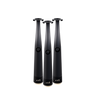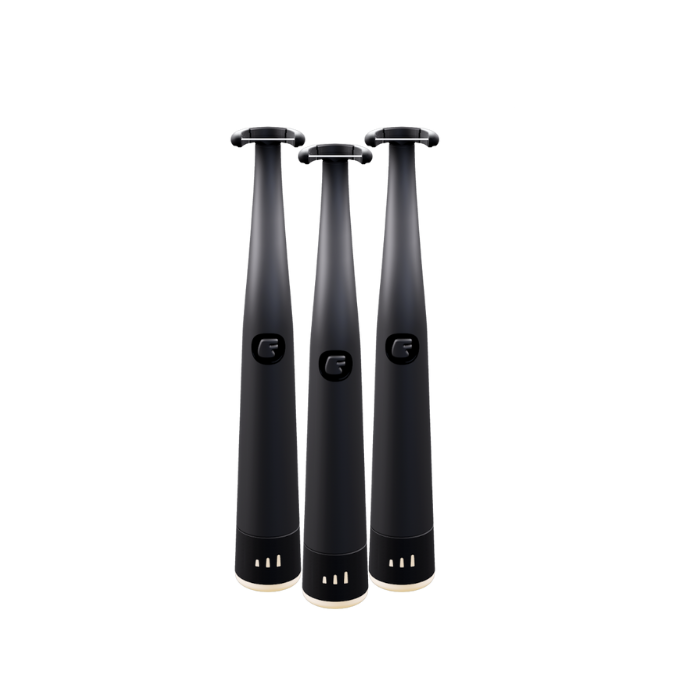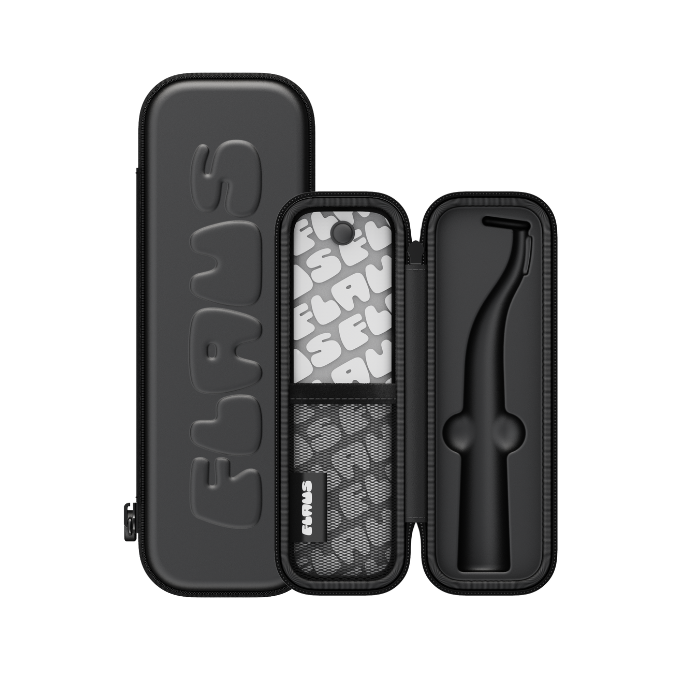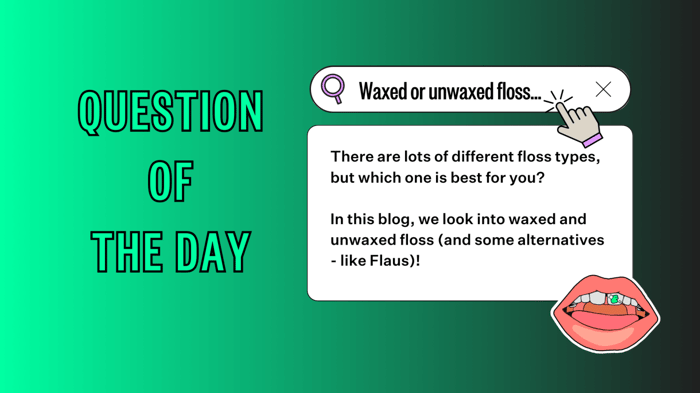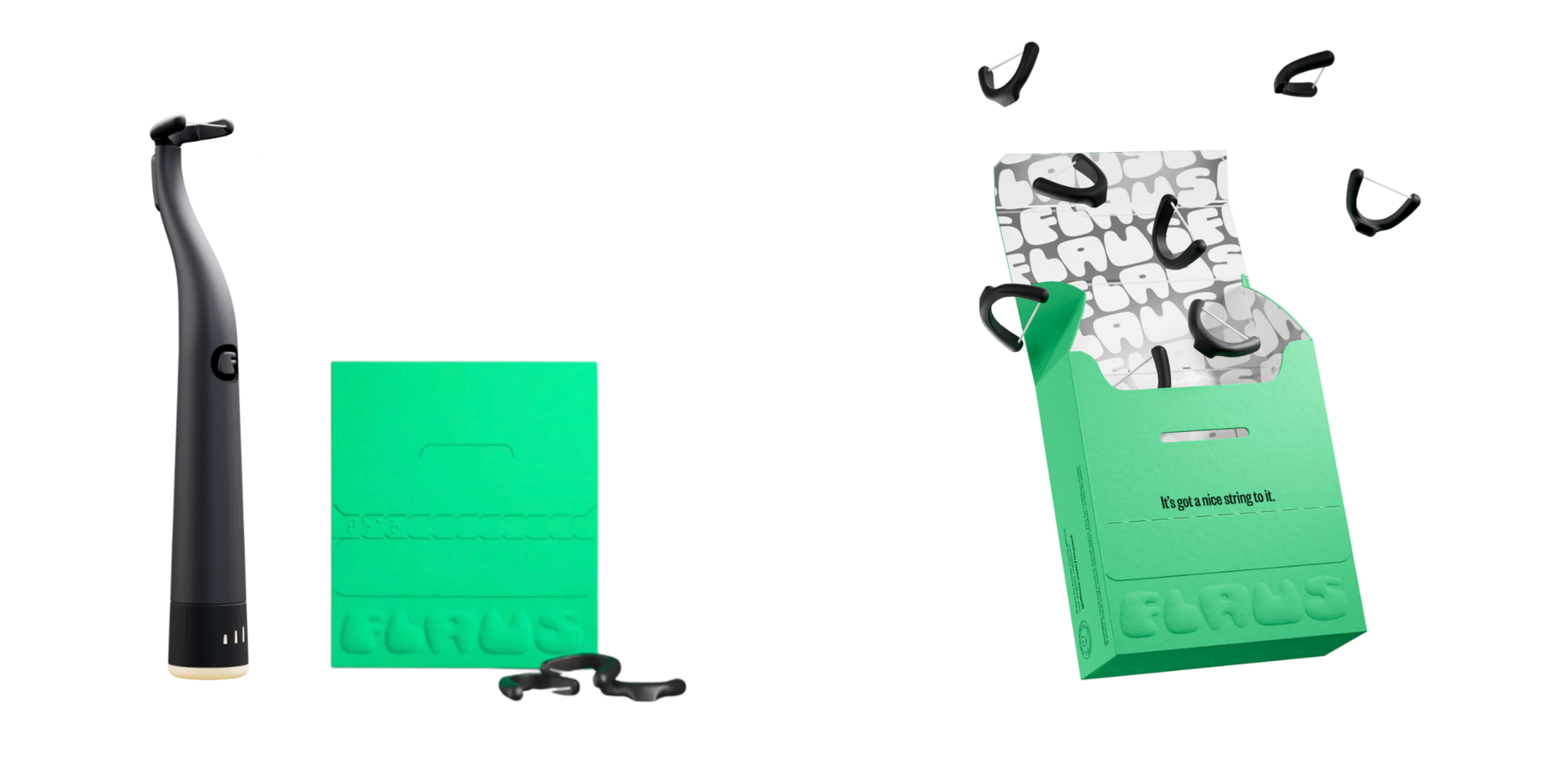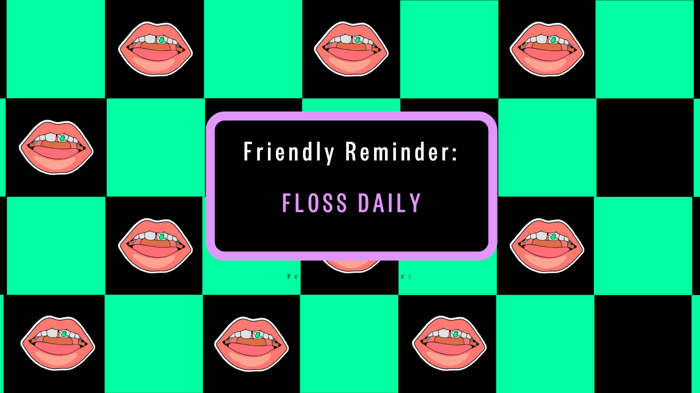Waxed or unwaxed? Flavored or unflavored? Whether you're a floss purist (unwaxed and unflavored please!) or you're interested in spicing up your flossing experience - we can all agree on one thing: flossing is a crucial step in maintaining a healthy smile. Whether you’ve been flossing for years or you’re just starting your oral care journey, you might be wondering what’s the difference between waxed and unwaxed dental floss. This blog post will serve as your flossing guide, delving into the characteristics of each type and how they impact your oral health. Let’s unravel the mystery behind “waxed vs unwaxed floss” and help you make an informed decision for your teeth.
Key Takeaways
-
To fully understand the Waxed vs Unwaxed Floss debate, you must first understand the difference between waxed and unwaxed dental floss.
-
Studies have found no significant difference in the effectiveness of waxed and unwaxed floss for plaque removal and gum disease prevention, with personal preference being a primary factor for which type of floss someone chooses
-
Regular flossing combined with brushing, annual dentist visits, and consideration of any personal factors (like if you have braces or dental appliances), can help ensure optimal oral health regardless of which floss you use
Understanding Waxed and Unwaxed Dental Floss

Dental floss plays a vital role in an oral care routine, aiding in plaque elimination and prevention of cavities and gum disease. Two common types of dental floss are waxed and unwaxed, both made with different materials and offering unique benefits.
Waxed floss is generally thicker than unwaxed floss, but both types are effective in removing plaque and preventing tooth decay. Understanding the differences between “waxed vs unwaxed floss” is crucial before deciding which one to incorporate into your daily oral care routine.
Waxed Dental Floss
Waxed dental floss is coated with a thin layer of wax, which makes it easier to slide between teeth. This natural lubricating property of waxed floss is especially useful for individuals with tightly spaced teeth, providing a smoother flossing experience. In addition, waxed floss is often flavored (sometimes with mint, cinnamon, or wintergreen), which can help maintain fresh breath after flossing.
The benefits of using waxed floss include:
-
Easy to use and sliding between teeth
-
Less shredding of floss
-
Ideal for those with tightly spaced teeth where floss often breaks during use
Unwaxed Dental Floss
Unwaxed dental floss is composed of thin nylon filaments twisted together into a single strand, making it thinner and more comfortable to maneuver in and out of the teeth. Unlike waxed floss, unwaxed floss is typically flavor-free, which some people prefer.
Nevertheless, using unwaxed floss comes with some disadvantages. It has the potential to snag in areas between teeth and is more likely to tear or break while in use. Despite these disadvantages, some individuals still prefer unwaxed floss due to its thinner consistency and lack of flavor.
Alternatives to Traditional Floss
Despite nylon waxed and unwaxed dental floss being common types of floss, there are alternative options to traditional floss that accommodate various preferences and needs. These alternatives include electric flossers, like Flaus, water flossers, floss picks, and expandable floss. Each of these options presents unique benefits and drawbacks, so finding the one that complements your oral care routine is key.
Electric Flossers
Electric flossers are a great way to maintain good oral hygiene, and Flaus is a good option for those looking for an eco-friendly and effective electric flosser. Here are some reasons why using an electric flosser is a great alternative to traditional flossing:
-
Easy Reach: They can reach tight spaces and molars easily due to the ergonomic handle
-
Easy to use: Electric flossers are easy to use and require less manual dexterity than traditional flossing
-
Comfortable: They can also be less messy and more comfortable to use than string floss, as you don't have to put your fingers in your mouth
-
Encourages good habits: Many people find electric flossers more enjoyable to use than traditional floss, which can encourage them to floss more regularly
-
Eco-friendly: Flaus is the world's first eco-friendly electric flosser, which can reduce waste and help protect the environment. Flaus uses 90% less floss than traditional flossing and offers a Flaus head recycling program to ensure that the floss heads are properly recycled at a dedicated oral care recycling facility.
Some of the features that Flaus has include:
-
Sonic vibrations: At 18,000 sonic vibrations/min, Flaus moves quickly and easily between tight teeth to massage gums and remove plaque and debris from tight spaces your toothbrush can’t reach.
-
Ergonomic Soft Touch Handle: With a design that feels as familiar as your favorite electric toothbrush, Flaus′ premium, ergonomic soft-touch handle gives you full control over hard-to-reach places while keeping your fingers (and the 10 million bacteria that live on them) out of your mouth.
-
Waterproof: Whether you are flossing on the go or multi-tasking in the shower, Flaus is waterproof and has you covered.
-
High Performing Floss Heads: Floss heads are fitted with high performing glide floss strong enough for the tightest of teeth, made with recyclable plastic and use 30% less plastic than traditional floss picks. You can also recycle your Flaus heads through a Floss Head recycling program where the floss heads are sent to be recycled in a dedicated oral care recycling facility.
-
Two Month Battery Life: The rechargeable flosser has a two month battery life and comes with a charging base and USB cable to boot.
-
Dentist Designed and Recommended: Flaus was designed with dental experts from day one to ensure the very best clean.
Overall, electric flossers, like Flaus, can be a great way to maintain good oral hygiene and encourage good habits. They are effective, easy to use, and eco-friendly, making them a good option for those looking for an alternative to traditional flossing.
Water Flossers
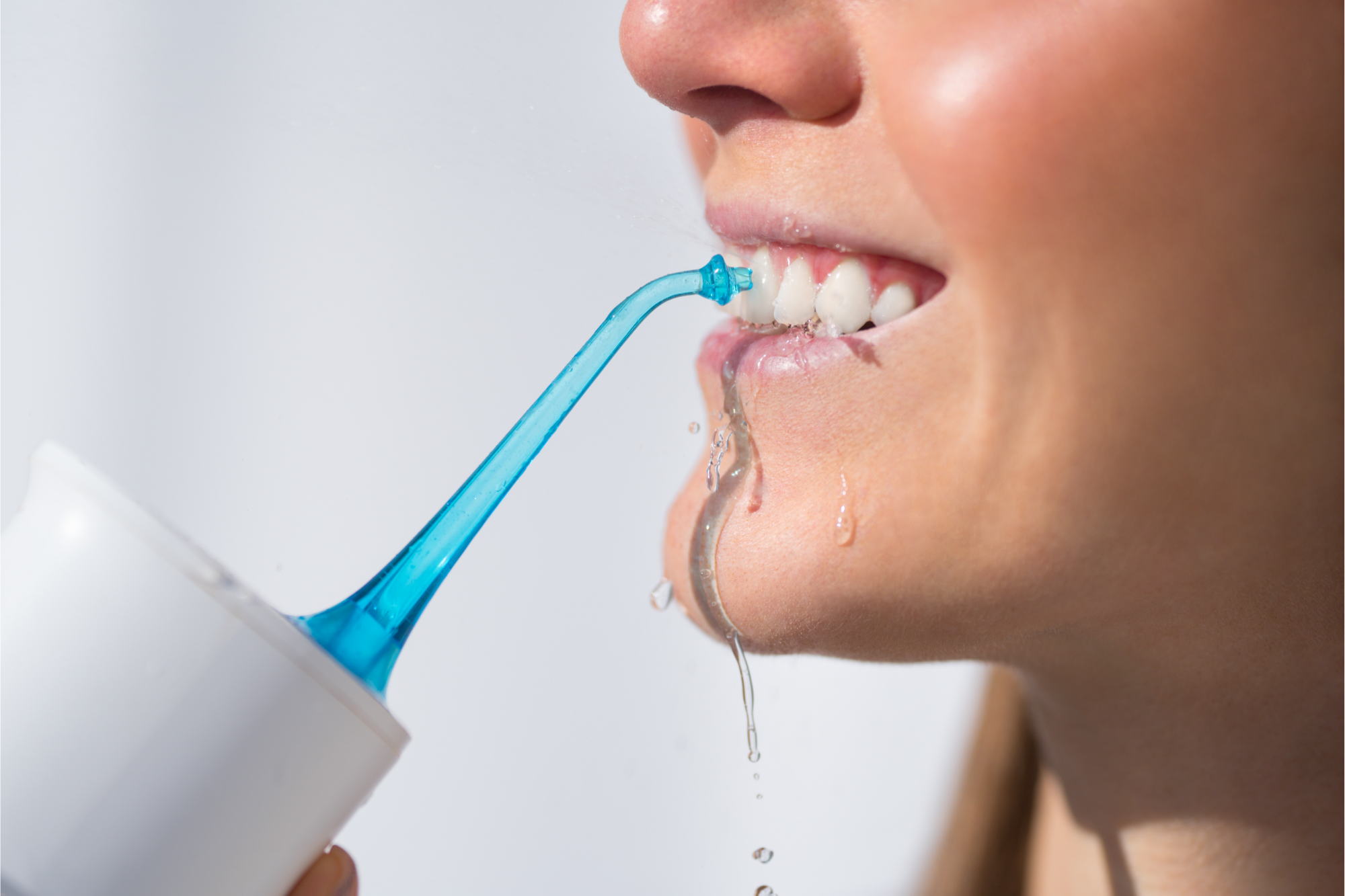
Water flossers, also known as oral irrigators, are handheld devices that use a stream of water to remove food particles and bacteria from between teeth and gums.
Using a water flosser can help improve your oral hygiene and play a roll in keeping your gums healthy. However, water flossers are not a replacement for traditional flossing.
Floss Picks
Floss picks are small plastic tools. On one end, there is a toothpick and on the other end, a u-shaped piece holds a tiny piece of dental floss between its sides. They offer convenience and ease of use.
Despite their convenience, floss picks may leave remnants between teeth, and their plastic construction generates more waste.
Expandable Floss
Expandable floss is an innovative alternative to traditional floss, designed to clean wider areas and dental bridges more effectively. Made of texturized nylon or polyester material, expandable floss is soft and supple, making it suitable for delicate gums. The expansion of the floss helps clean more surfaces, eliminating plaque, and can easily reach and clean areas around bridges, braces, and implants.
Some expandable flosses are even infused with ingredients like coconut oil and xylitol to help combat cavities and gum disease.
However, some with tight teeth have found this floss to be difficult to use and get between tight contacts.
Comparing the Effectiveness of Waxed and Unwaxed Floss
In terms of plaque removal and gum disease prevention, studies show that both waxed and unwaxed floss exhibit equal effectiveness. Several studies have been conducted on their effectiveness, with some finding unwaxed floss slightly more effective in terms of plaque removal and gingival health. However, other research has concluded that there is no significant difference in effectiveness between the two floss types.
Ultimately, personal preference and comfort dictate the choice between waxed and unwaxed floss.
Gum Disease Prevention
Flossing with either waxed or unwaxed dental floss assists in the removal of debris and plaque. By removing food particles and plaque between teeth and along the gum line, flossing helps prevent gum disease by helping to eliminate plaque, which can erode tooth enamel and lead to tartar buildup.
Both types of floss perform well in maintaining gingival health, so choosing the best floss that aligns with your needs and preferences is vital.
Special Considerations for Choosing Between Waxed and Unwaxed Floss
Factors such as dental appliances and personal preference are worth considering when choosing between waxed and unwaxed floss. If you have braces or other dental appliances, waxed floss may be more suitable due to how easily it glides between teeth and its reduced risk of breakage.
On the other hand, personal preference plays a significant role in choosing the right floss type, as some people may find one type more comfortable or effective than the other.
Braces and Dental Appliances
Studies have shown that waxed floss is easier to use than unwaxed floss when used with braces and dental appliances, as it:
-
Glides more smoothly between teeth
-
Is less likely to get caught on bracket edges and wires
-
Has increased stiffness, reducing the risk of breakage or becoming stuck between teeth or on rough edges
For those with braces and dental appliances, using a floss threader can make the process of flossing easier. It is an effective way to loop the floss under fixed bridges or orthodontic wires.
Personal Preference
Ultimately, personal preference dictates the choice between waxed and unwaxed floss. Those who favor waxed floss may appreciate its smoother movement between teeth and resilience against breakage. Moreover, the flavors offered in waxed floss, such as mint or cinnamon, can also influence an individual’s preference.
On the other hand, some people may prefer unwaxed floss due to its thinner consistency and absence of artificial flavors. Despite its tendency to snag and break more easily, unwaxed floss can still be an effective option for maintaining oral health, depending on the individual’s needs and preferences.
Consult Your Dentist for Personalized Recommendations
Consulting your dentist for personalized recommendations on the most suitable floss type for your unique dental needs is vital, as they can provide advice tailored to your individual dental needs. The American Dental Association recommends consulting with your dentist regarding dental floss use at least once per year.
Seeking professional guidance can ensure the utilization of the most suitable floss type and technique for optimal oral health.
Summary
In conclusion, both waxed and unwaxed dental floss have their unique benefits and drawbacks, and the choice between them often comes down to personal preference and individual dental needs. While some may prefer the smooth glide of waxed floss, others might opt for the thin and flavor-free unwaxed floss. Ultimately, the most important factor is using the floss consistently and correctly to maintain a healthy smile. Don’t forget to consult your dentist for personalized recommendations and explore alternative flossing options if necessary. Happy flossing!
🌟 Discover a Revolution in Oral Care! 🌟Tired of traditional flossing? Experience the future with the Flaus Electric Flosser.✨ Faster. Efficient. Effortless. ✨Don't just read about it, make the switch today!👉 Get Your Flaus Electric Flosser Starter Kit Now! 👈


